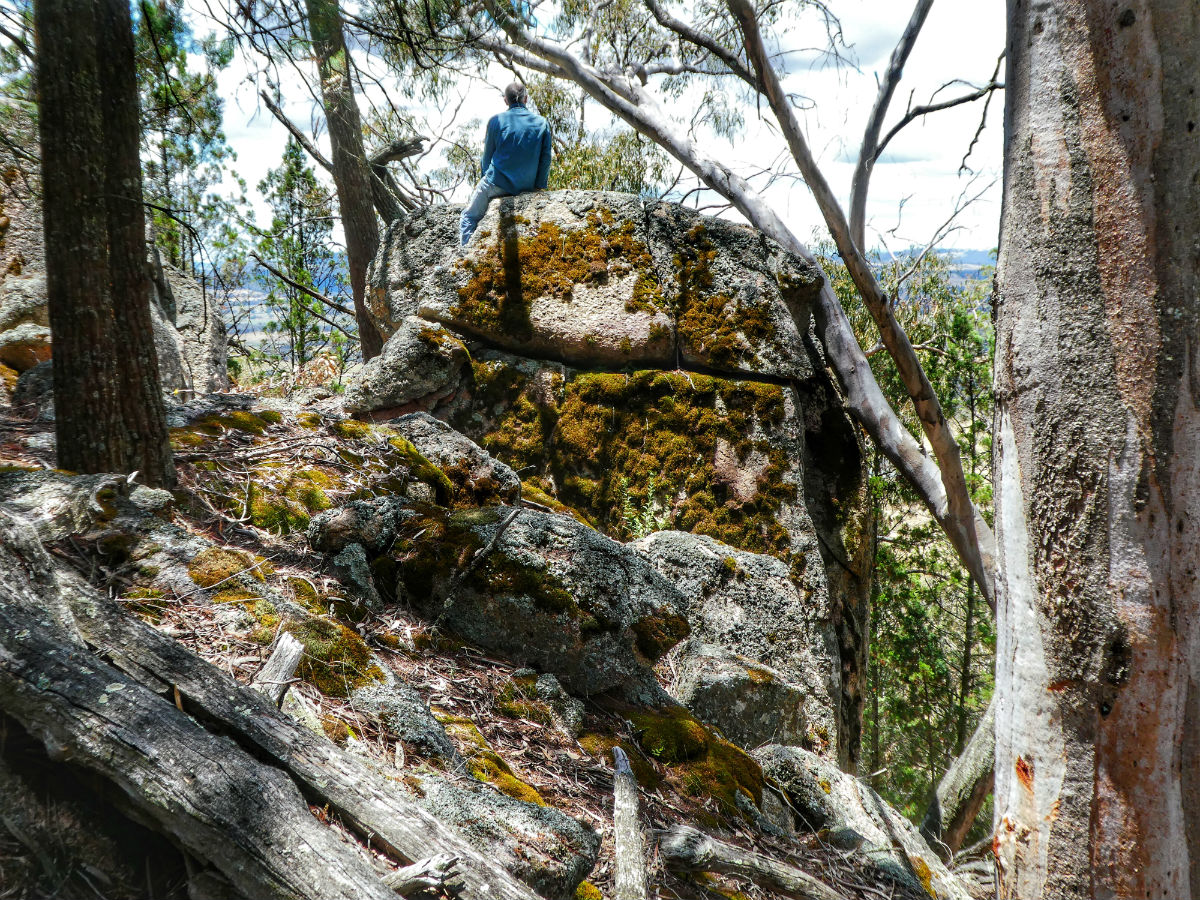Mt Pilot Granite
Big hunks of stone always make me smile
When I despair that the world is changing too fast — or not changing fast enough — I often visit a favourite place: an outcrop of rocks in north-east Victoria.
I drive down the Hume Freeway, turn off to Beechworth, and bump along a track, winding through pine plantations, until I arrive at a gully in Chiltern—Mt Pilot National Park. I lock the car and walk past the motorbike trails, up a stone path dug by gold-miners, to the ridge, where there are no tracks. I keep going till I get to the rocks.
My favourite rocks don’t have a name. They have a presence. There’s this thing about a granite boulder. If you sit on a log in a quiet patch of bush, you can imagine you’re the only person ever to sit there. But when you stand by an enormous, round rock, you know you stand where others have stood and sat and laughed and slept since people first walked in that corner of the earth. Not far from here, a rock shelter bears a fading image, painted in ochre, of an extinct animal, a thylacine.

Image: Ian Lunt
Sometimes when I visit, I climb onto a low, flat shelf and lie down until the wrens hop close and the moss wets through my clothes. As I gaze back down the hill, I see smoke rising from a stubble fire, a truck rusting in a paddock, shiny mobile phone towers. I hear the drone of trucks on the freeway, carting more stuff for us to buy in Sydney, Canberra and Melbourne. Like Thoreau at his pond, it’s never lonely at my refuge from the crowd.
Between the boulders stand native trees that were named after trees from Europe: cypress-pines, slender trunks in stockings of orange lichen, and long-leaved box, weighed down by sagging, heavy boughs. Beneath the trees are grasses and lichens: soft in spring and crunchy dry in summer. And, of course, the rocks.
The things we are doing to the planet will change this forest forever. I understand that. The pools may dry, down in the creek where the honeyeaters drink. The trees will burn and burn again. But the rocks will stay: quiet, accepting, just hangin’.
Every time I visit, these great big hunks of stone make me smile. Every single time. Before I leave, I nod in thanks; then I breathe in, bounce down the hill, and make my place among the trucks on the freeway below — with peace, hope and the courage to try again.
Ian Lunt is an ecologist and writer. He lives in the regional city of Albury, New South Wales.

